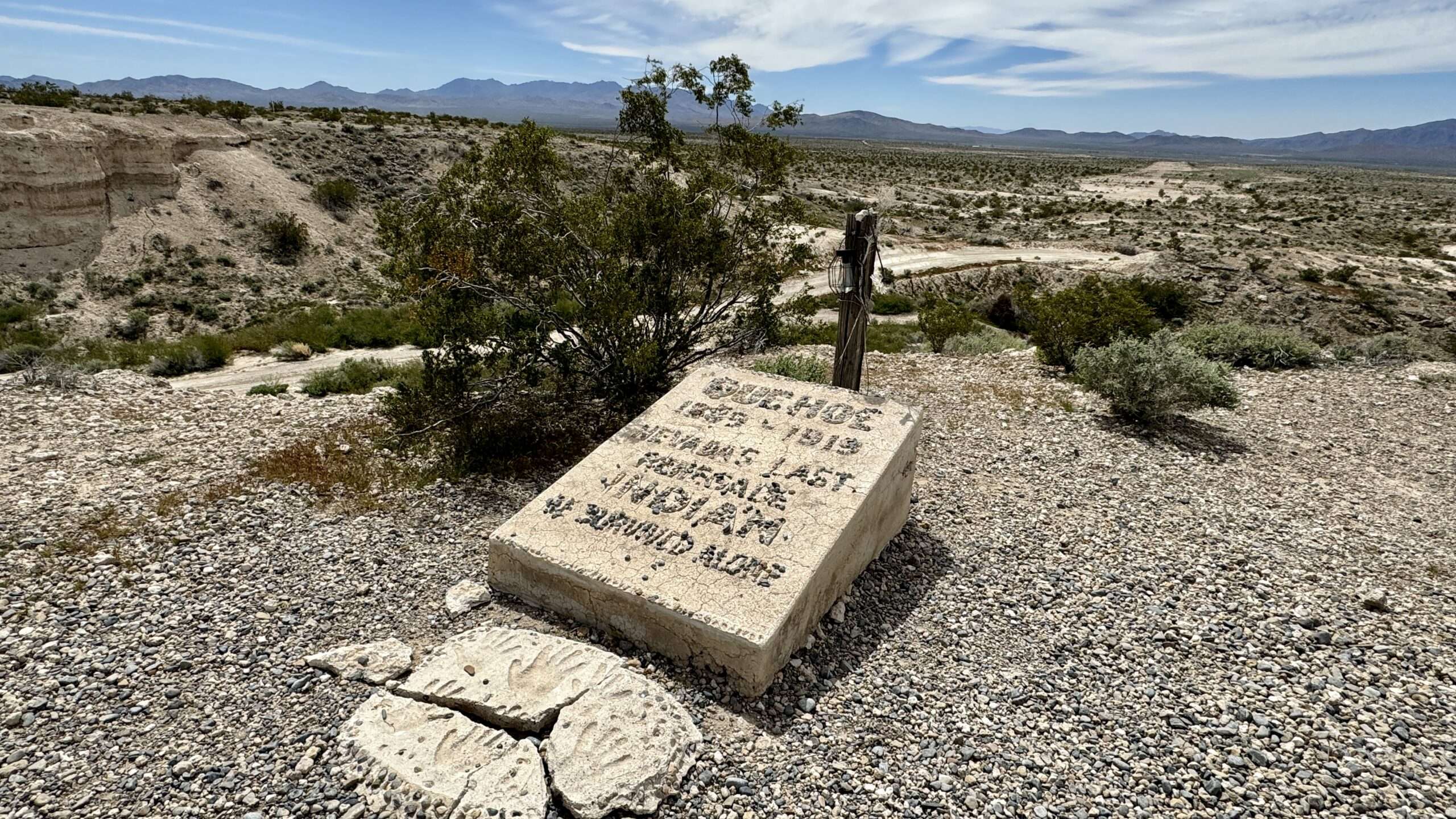
Queho is known as “The Mad Indian,” and many consider him Nevada’s first serial murderer. The history of his reported murders is conflicting and includes a murder victim who insisted he was very much still alive. The tale of Queho’s death and the journey of his mummified remains is even more bizarre than his life. It involves legal battles, thievery, display cases and even The Helldorado Days parade.
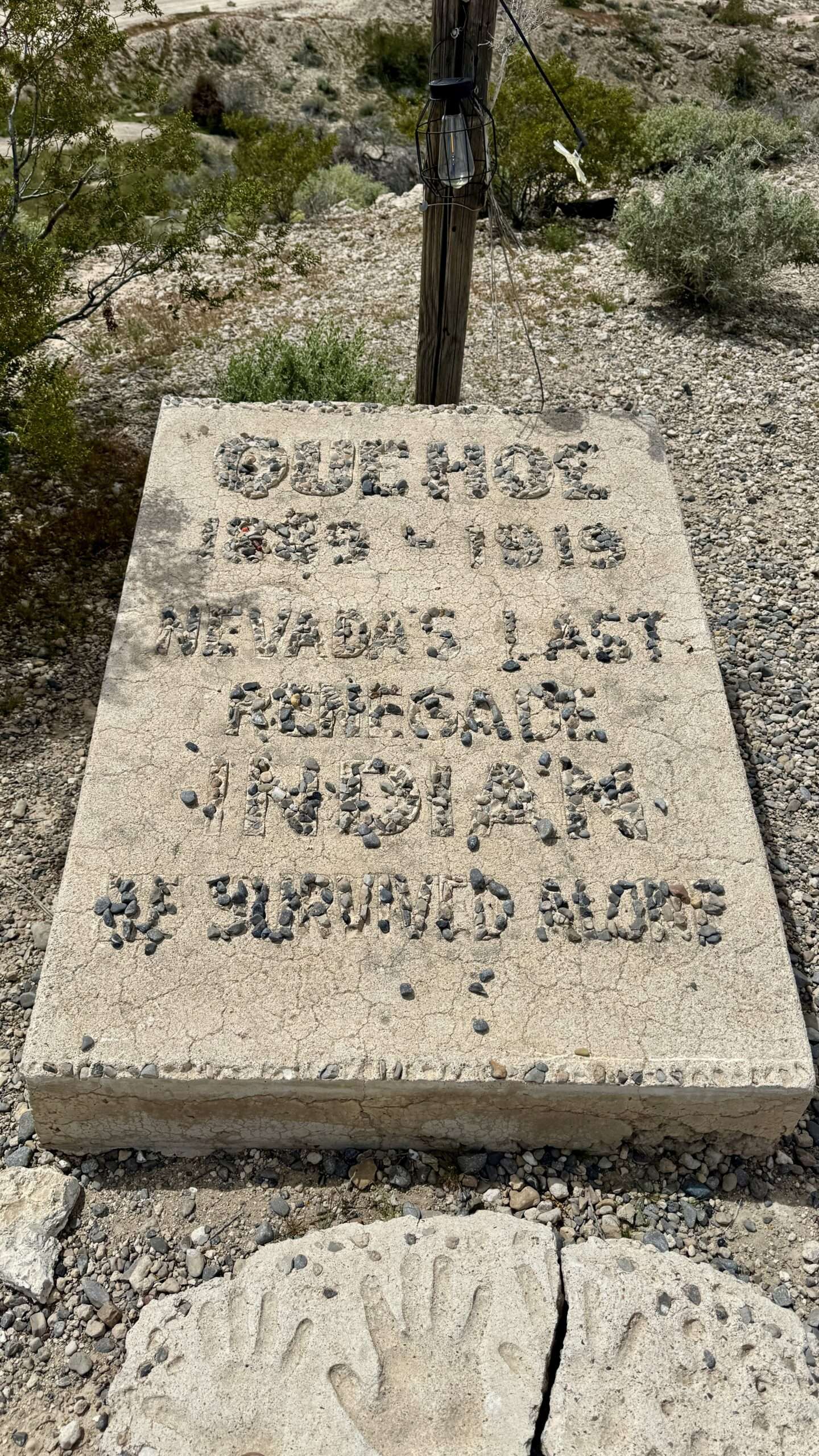
Queho
Information about Queho is limited and conflicted. He was born in the 1880s outside of Nelson, possibly on Cottonwood Island. His mother was Native American and could have been from various tribes, including Mojave, Cocopah, Chemehuevi, or Paiute. Queho’s father is unknown, possibly a miner from Mexico or a soldier from nearby Fort Mohave. His mother died shortly after his birth, orphaning Queho and his older brother Avote.
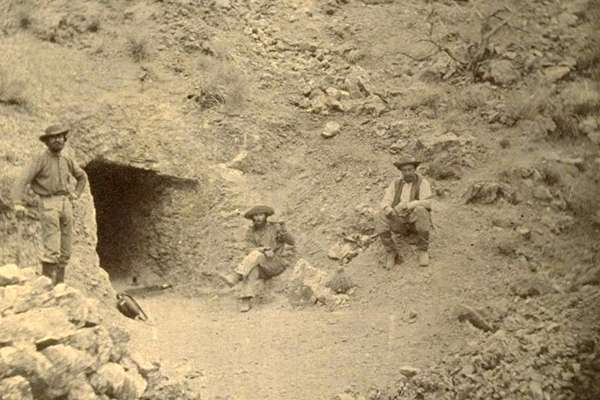
Queho was born with a club foot or broke his foot or ankle as a child. The lack of medical care left him with a distinct gait and footprints. His appearance was also notable for a second row of teeth. He grew up around Techatticup Mine, performing odd jobs and collecting driftwood to sell to miners.
Avote
Queho’s older brother Avote murdered five white people and hid in the canyons and cliffs above the Colorado River. 17-year-old Queho and another Native American, Jim White, searched for his brother to bring him back dead or alive. The pair found Avote on Cottonwood Island, allowed him to pass, then shot him in the back of the head. Instead of bringing his body back to Eldorado Canyon, they amputated his hand, notable for only four fingers, and presented it as evidence of Avote’s death.
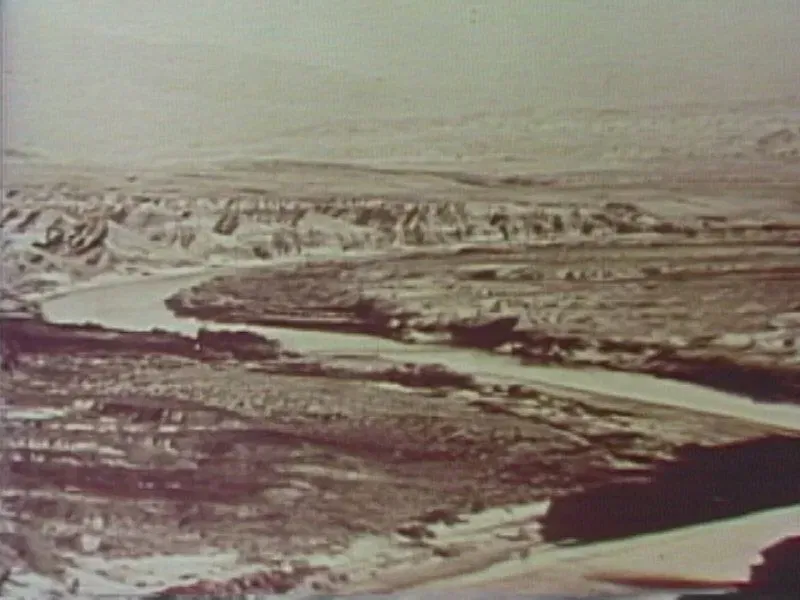
(Photo credit: News3LV)
Trail of Murders
Queho’s reputation soon declined from a hero to a murderer. He is estimated to have committed between five and twenty-five murders. The mention of Queho’s name brought fear, and he became the Boogyman of southern Nevada.

The first murder attributed to Queho was J.W. Woodworth in 1910. Reportedly, Woodworth refused to pay for a day of woodcutting and Queho beat him to death with a piece of wood.

In November of that year, fellow Masons discovered L.W. Gilbert, the watchman of the Gold Bug Mine, shot in the head. His deputy’s badge, #896, was missing. Footprints leaving the crime scene showed drag marks consistent with Queho’s injury.

Did Queho commit all the murders?
Queho was accused of murdering miner James Patterson. The week after reports of the murder, Patterson arrived in town, insisting he was very much alive. The news reported, “Patterson is oiling up the old musket preparatory for going on a hunt for the man that killed him.”

Law enforcement made multiple attempts to capture Queho. The “Dead or Alive” reward grew from $500 to $3,000 as the years passed. Lawmen and posses thought they could outsmart the murderer. Frank Wait, a deputy and then later undersheriff, led multiple searches for the elusive Queho. All were to no avail; Queho knew the Colorado River better than anyone.

The last confirmed sighting of Queho was in 1919. Murders attributed to Queho ended, and he faded into obscurity. In the 1930s, a policeman thought he had spotted Queho, but he had disappeared before reinforcements arrived.

(Photo credit: UNLV Special Collections)
Colorado River Cave
In February 1940, Charley Kenyon and brothers Art, Ed Schroeder prospected along the Colorado River. The trio spotted a cave 2,000 feet above the river with a rock wall. Investigating, they discovered mummified human remains. Clothing, cookware, silver-tipped arrows, and Winchester 30/30 rifle littered the cave.
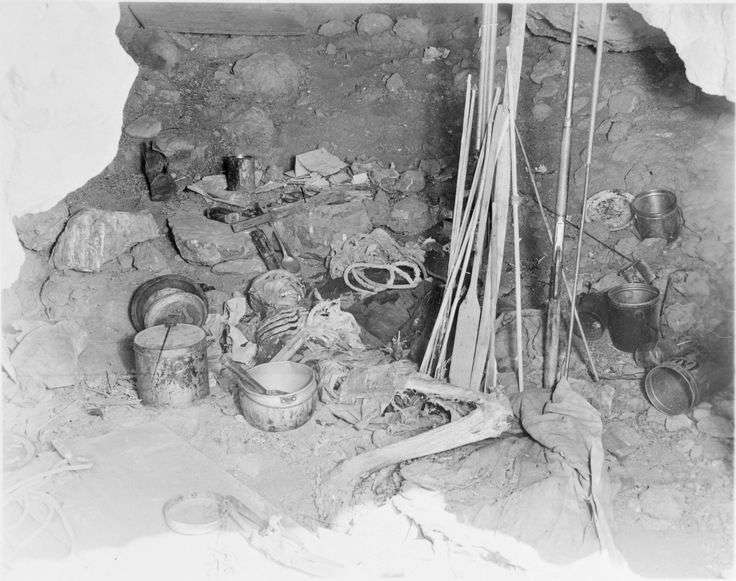
(Photo credit: Find a grave)
The most damning evidence against Queho was L.W. Gilbert’s deputy badge #896, which went missing following his murder at the Gold Bug Mine two decades prior.
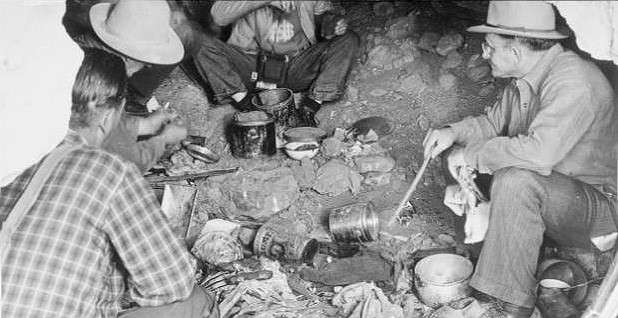
(Photo credit: Green Wire)
Frank Wait, now the Chief of Police, along with other members of the 1910 posse, visited the cave along with Coroner A. J. Nelson. The coroner identified the remains as Queho due to the leg injury and second row of teeth. The coroner ruled the death of natural causes. Based on the tourniquet around Queho’s leg, it is thought a rattlesnake bit him. Plywood, dynamite and blasting caps from Hoover Dam indicate Queho was alive into the 1930s.
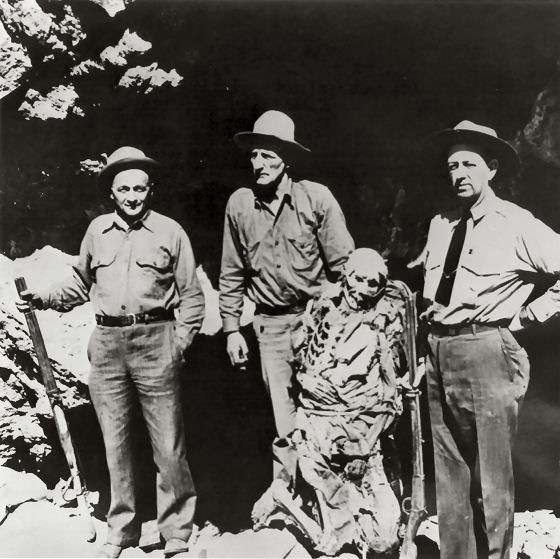
From left to right: Clarke Kenyon, Frank Wait, and Art Schroeder
(Photo credit: UNLV Special Collections)
Leaving the cave and mummified remains, Wait, “planted a resounding kick on its posterior,” saying he had waited twenty years to do that.
The Traveling Mummy
Queho’s mummified remains were taken to the Palm Funeral Home in Las Vegas. Charles Kenyon, one of the men who discovered the cave, demanded he receive the reward offered for finding Queho. Receiving no payment, he laid claim to the mummy and cave’s possessions.

(Photo credit: Vintage Las Vegas)
A three-year battle ensued over Queho’s remains. Kenyon wanted to sell them to the Elks Club for display, the funeral home wanted compensation for storage, and some claimed to be Queho’s relatives. As the family disappeared, the judge awarded the remains to the funeral home.

Frank Wait stepped in once again. He reimbursed Palm Funeral Home for their services. Wait took the remains’ possessions and gave them to the Las Vegas Elks Club. They built a glassed-in replica cave, staging Queho and items from his cave for display. The club hosted Las Vegas’s largest celebration, “Helldorado Days,” and Queho rode in the Helldorado parade. The Elks display lasted into the 1950s.

(Photo credit: Vintage Las Vegas)
Queho’s remains changed hands multiple times. At some point, they were stolen and located in Bonnza Wash.
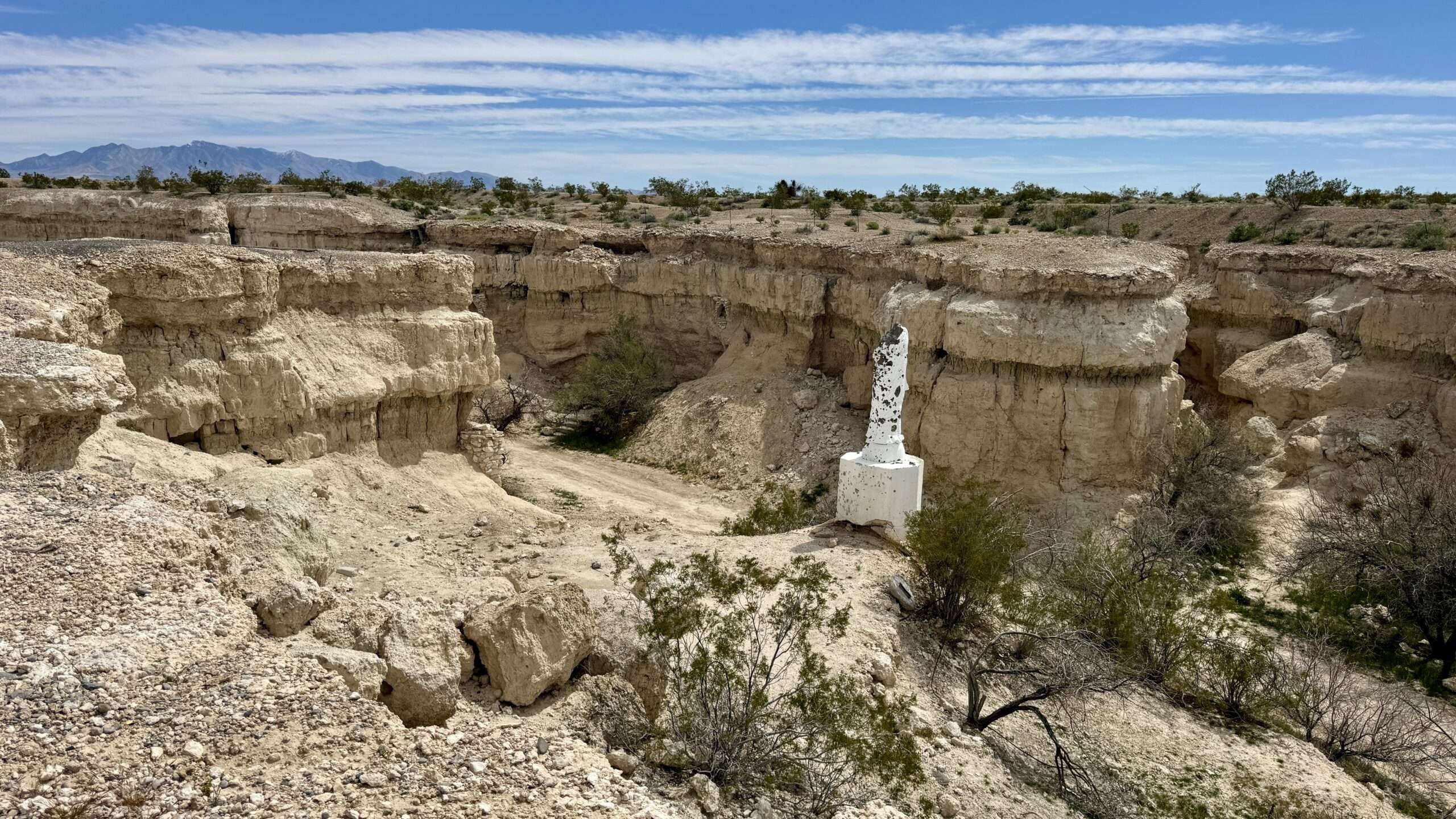
Ronald H. Wiley, a retired district attorney and two-time gubernatorial candidate, stepped in and assumed control of the remains from the Museum of Natural History. Wiley had built Cathedral Canyon, an open-air church in a box canyon on his ranch outside Pahrump.
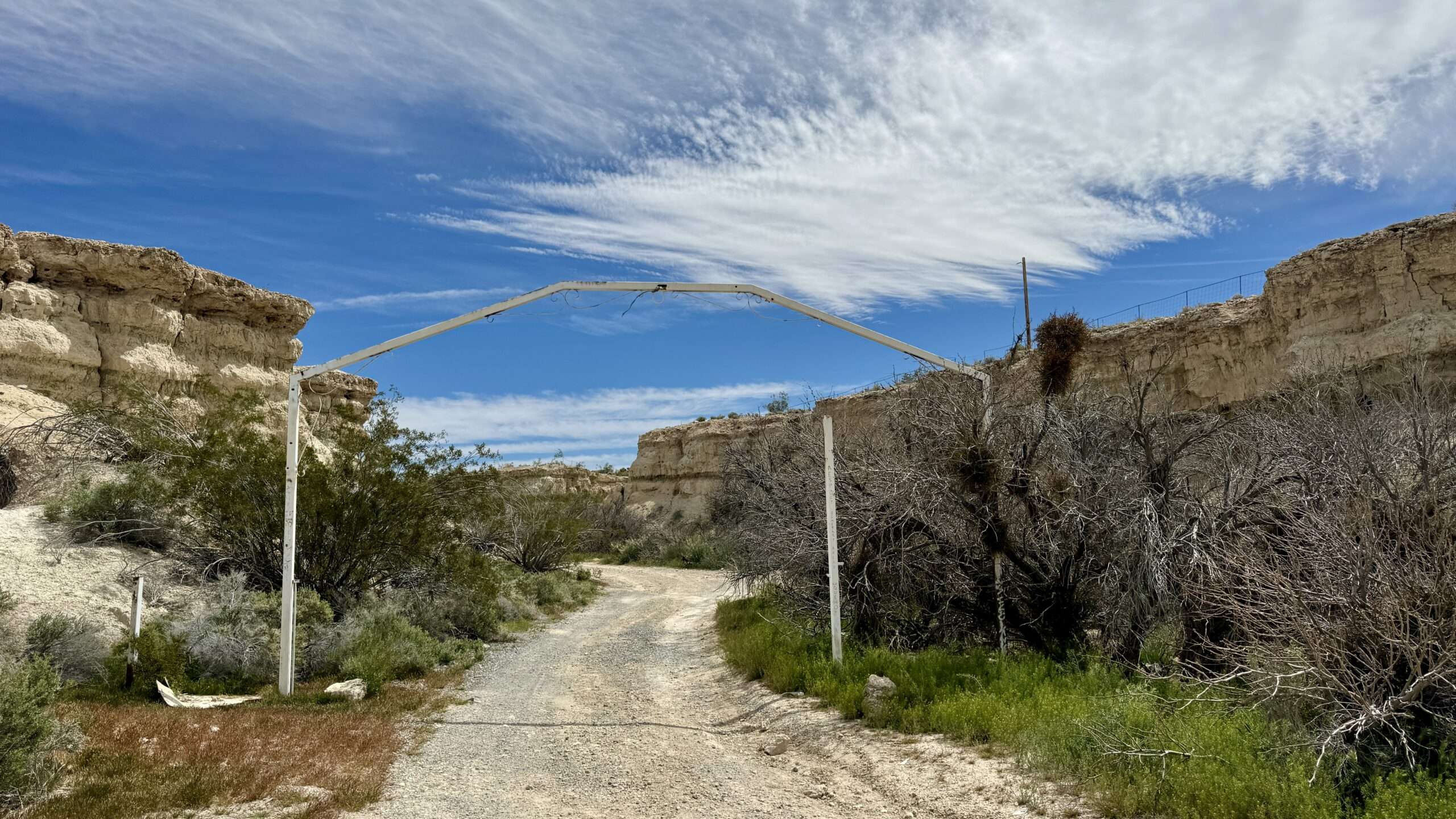
On November 6, 1975, Wiley laid Queho to rest. Queho’s nemesis, Frank Wait, attended, relieved Queho finally had a proper burial. A marker at Cathedral Canyon reads, “Nevada’s Last renegade Indian; he survived alone.”

WANT MORE GHOST TOWNS?
For information on more than five hundred ghost towns in Nevada & California, visit the Nevada Ghost Towns Map or a list of Nevada ghost towns.
Learn about how to visit ghost towns safely.

References
References
- Daily Independent, October 11, 1910
- Daily Independent, December 5, 1910
- Las Vegas Age, January 14, 1911
- Las Vegas Review-Journal: Queho. February 7, 1999.
- Legenda of America: Queho – Renegade Indian Outlaw or Scapegoat?
- News3LV: Finding the truth in the legend of Nevada outlaw Queho
Chuck Young says
Great story, thanks for the research and telling…
Tami says
Welcome, I’m glad you enjoyed the story.
Richard Mcgrew says
That is a crazy and interesting story.
Tami says
Sometimes truth is stranger than fiction!
Bill Curtiss says
Very interesting story never heard of it before thanks
Tami says
I heard of the murder at Nelson but not the rest of the story. Once I learned about Queho, I had to investigate!
Dave Williams says
Great story. I had not heard about Queho’s older brother before, but the rest of the story matches what I’ve read.
Tami says
I didn’t dig into Avote, but I’m sure that is an interesting story by itself.